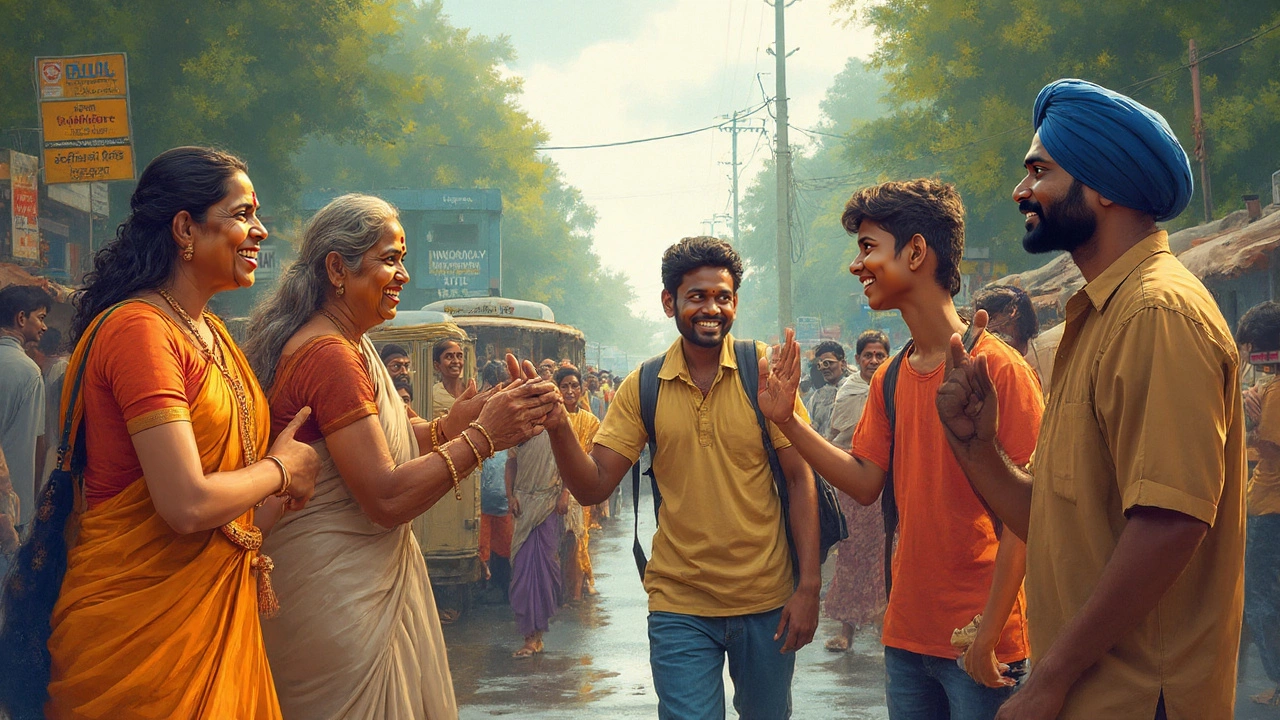
Do You Say Hi in India? Greeting Etiquette, Namaste, and What Works in 2025
Wondering if 'hi' works in India? Here’s a clear guide to greetings, namaste vs hello, regional phrases, body language, and business etiquette for 2025.
Walking into a new place in India, the first thing you’ll hear is a smile and a greeting. Knowing the right word to use shows respect and can open doors instantly. Below you’ll find the most common phrases, the regions they belong to, and a few simple rules to keep you from making an accidental faux pas.
Namaste / Namaskar – The all‑time classic. Used in Hindi‑speaking areas and many parts of North India. Bring your palms together at chest level, say "Namaste" and give a slight bow. It means "I honor the divine in you" but you don’t need a deep explanation – just the gesture works.
Namaskaram – The South Indian sibling of Namaste. You’ll hear it in Tamil, Telugu, Kannada, and Malayalam states. The hand gesture is the same; people just say "Namaskaram".
Sat Sri Akal – The Sikh greeting, heard in Punjab and Sikh communities worldwide. It translates to "Truth is the ultimate god". A firm handshake or a simple "Sat Sri Akal" works fine.
Assalamu Alaikum – Common among Muslims across India. It means "Peace be upon you". The reply is "Wa Alaikum Assalam". No bow needed, just a warm smile.
Vanakkam – Used in Tamil Nadu. Pair it with the same palm‑press gesture. It’s a friendly, everyday hello.
Kem cho? – Gujarati for "How are you?" Often followed by "Majama" (I’m fine). It’s a casual way to start a conversation in Gujarat.
Namaste ji – Adding "ji" adds politeness, especially when meeting elders or in formal settings. It’s a tiny tweak that shows extra respect.
Do use the palm‑press gesture whenever you’re unsure which word to choose. It’s universally understood and never looks out of place.
Don’t shake hands with someone wearing shoes indoors – many Indian homes consider shoes a dirt source. If the person extends a hand, follow their lead.
Do notice the context. During festivals, people add the name of the celebration – "Happy Diwali", "Merry Christmas", or "Shubh Holi". A quick "Happy" plus the festival name is always appreciated.
Don’t use overly informal slang with strangers, especially elders. Stick to the standard greetings until you get a cue that a more relaxed tone is okay.
Do keep eye contact friendly but not staring. In many parts of India, a gentle gaze shows confidence, while a hard stare can feel confrontational.
Don’t forget that regional accents matter. If you’re in West Bengal, saying "Nomoskar" instead of "Namaste" can earn you smiles.
Finally, match your tone to the situation. A formal "Namaste" for business meetings, a warm "Kem cho?" for a street market chat – the right vibe makes the greeting feel natural.
With these basics in hand, you’ll feel comfortable walking into any Indian gathering. Remember: a genuine smile plus a simple "Namaste" goes a long way.

Wondering if 'hi' works in India? Here’s a clear guide to greetings, namaste vs hello, regional phrases, body language, and business etiquette for 2025.